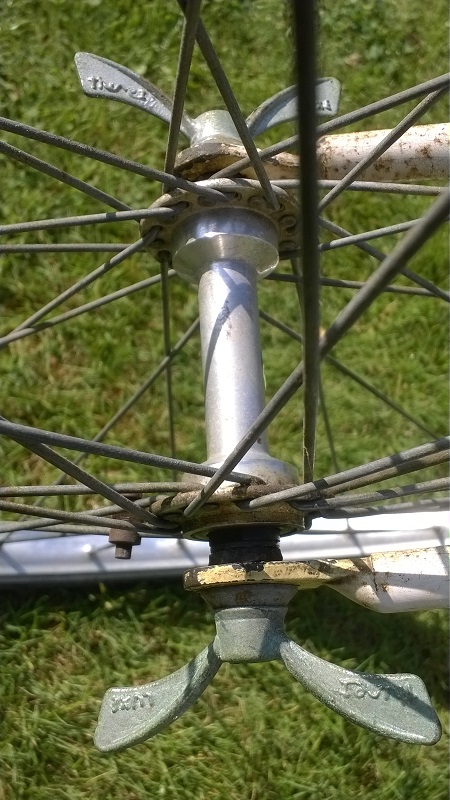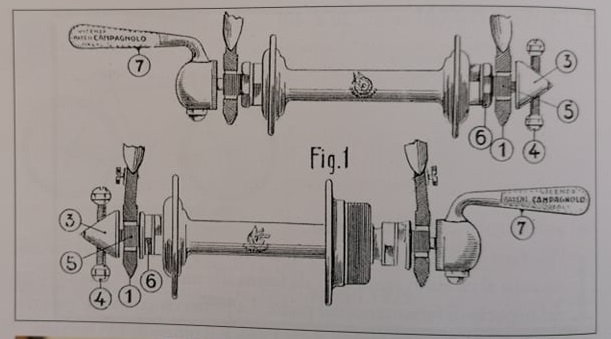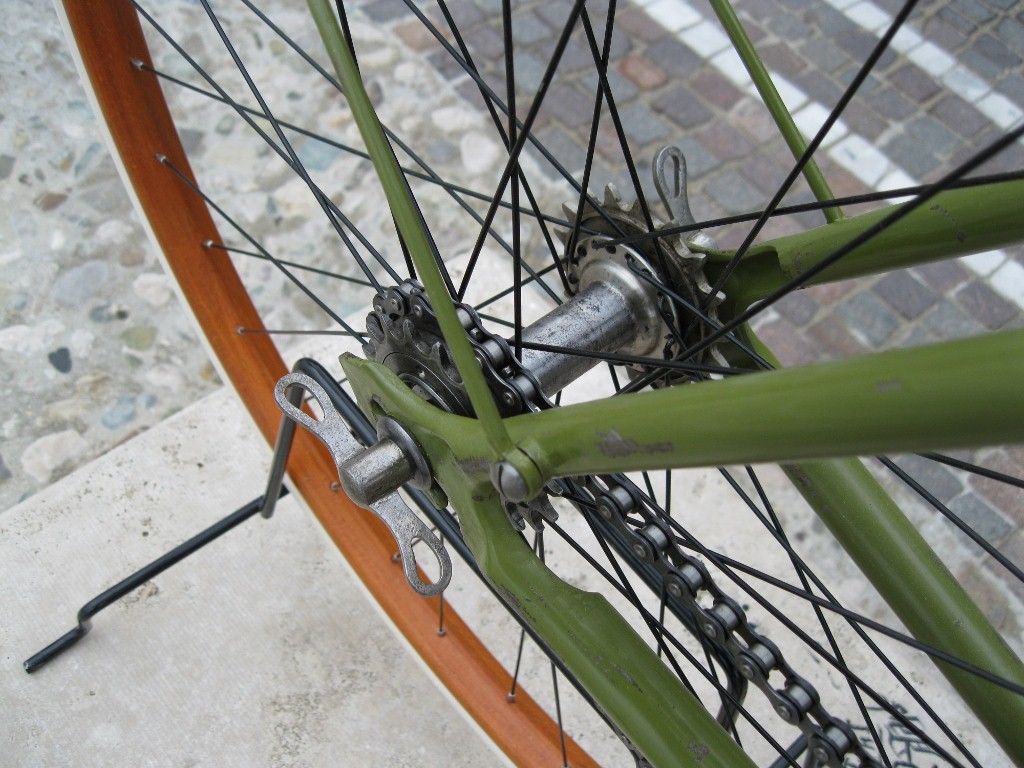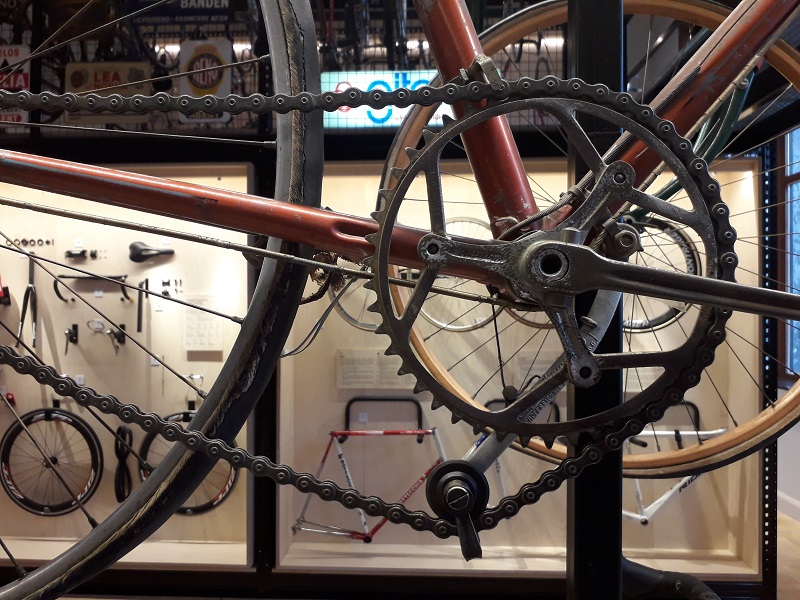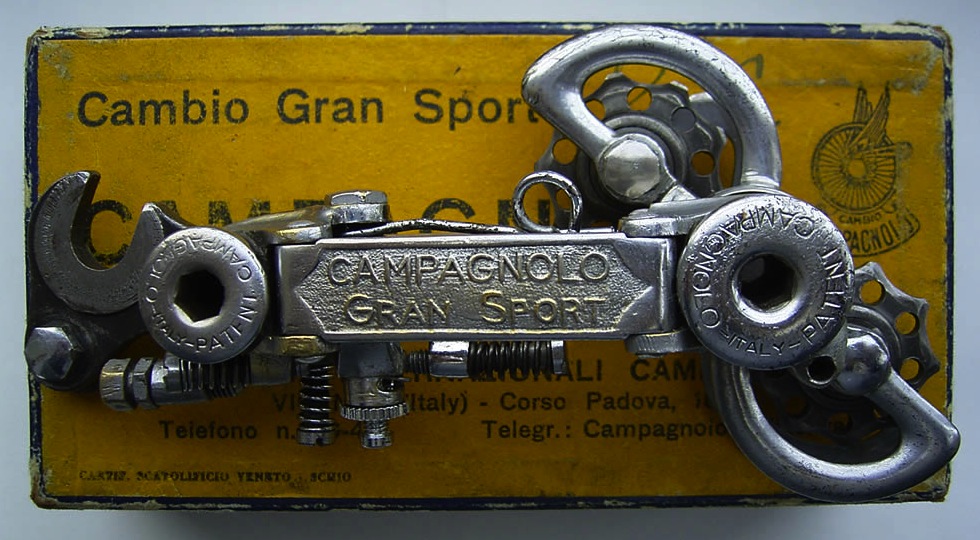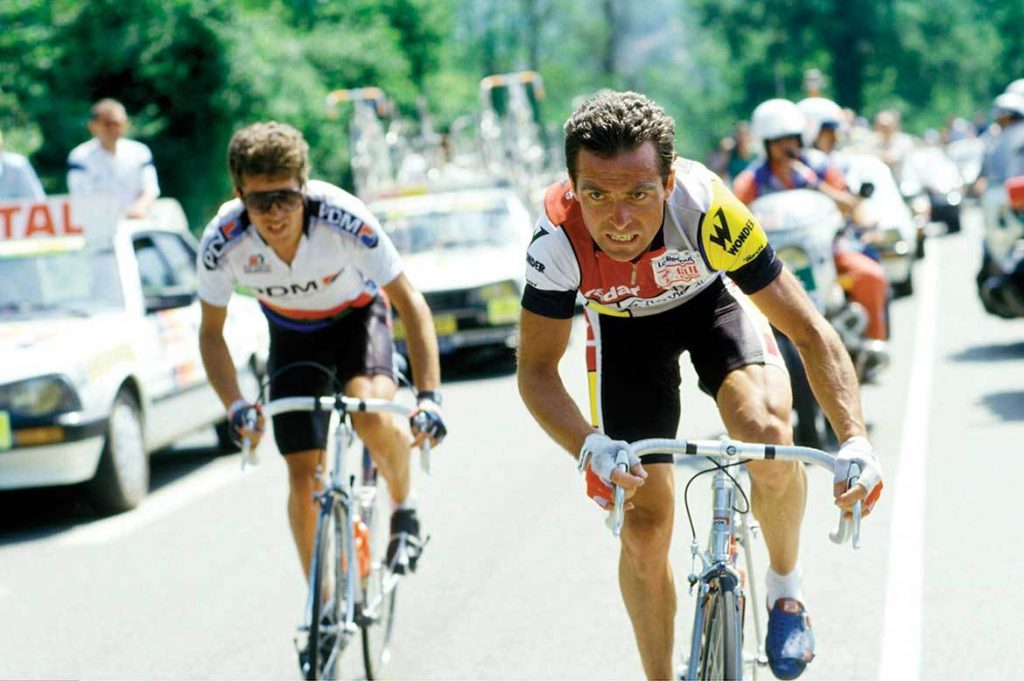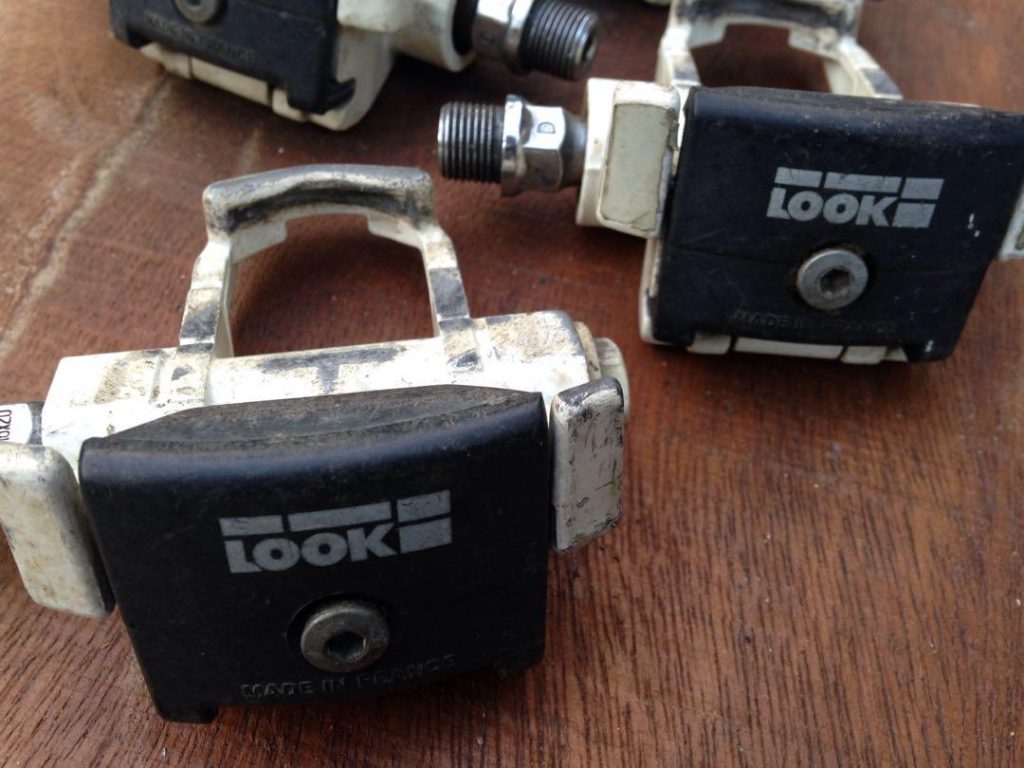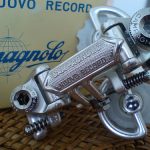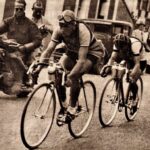Many innovations have been launched in the bicycle industry over the years. The one more successful than the other but of crucial importance for the development of the bicycle and cycling in particular. In this first part, the following innovations are discussed:
- the quick release
- the derailleur
- the clipless pedals
- the STI shifting system
- the triathlon handlebars
The quick release
Until the 1930s, it was customary for the racing bikes of that time to have 2 sprockets mounted on the rear wheel. 1 small sprocket for the flat and 1 large sprocket for the mountains. After all, there were no gears yet.
At the base of each climb, the rider had to get off the bike, loosen his wheel that was attached with wing nuts, take off the chain, turn the wheel, put the chain on the large sprocket and tighten the wheel again. A time-consuming activity, but fortunately losing a few minutes in time when the journeys were sometimes more than 400 km long was not so important.
Loosening the wheel was much more difficult, especially in freezing weather. There is a story that Italian rider Costante Girardengo in Milan Sanremo failed to unscrew his wheel and was so angry that he threw his bike on the ground and drew a cross in the ground as a symbol of surrender.
Tullio Campagnolo, during his short career as a cyclist, was also impressed in 1927 at the foot of the Passo Croce d'Aune that he was determined to invent a simple system one day.
Promised to do so and after several experiments, Campagnolo applied for a license in 1930 for the quick release, a revolutionary invention that allowed the rider to loosen and turn the wheel in no time without any problem. This system is still used today.
Derailleur
In the early years of cycling, there were no gears, on the rear wheel there was a cog wheel on both sides: one large and one small. To ride up a mountain, the riders had to turn their wheel at the base of the mountain and put the chain on the largest sprocket.
In the 1930s, several bicycle manufacturers came onto the market with a derailleur that no longer required you to get off your bike. You could use a smaller or larger gear while you were cycling.
In 1930, the brothers Nieddu launched the derailleur Cambio Vittoria with 3 gears. Above the crankshaft a lever was mounted that allowed the rider to change gears. The system was not so easy to operate because first you had to loosen the lever, then pedal backwards and then put the lever back.
Campagnolo releases its Cambio modello Corsa around the same period, which applies the same principle but with 2 levers on the seat stays.
However, the big change comes in 1951 when Campagnolo releases its derailleur Gran Sport It is a parallel derailleur that allows to use 5 sprockets at the rear. The derailleur is operated with a gear lever on the angled down tube. At the front there were 2 sprockets, so the rider now had 10 gears. The modern derailleur was born.
STI shifting system
In 1990 Shimano launched the STI shifting system which stands for Shimano Total Integration. This is a revolutionary system in which braking and shifting are integrated in 1 unique system that is located in the brake levers. The gear levers on the sloping top tube are therefore a thing of the past.
The rider can now shift gears while standing upright on the pedals. For that, the rider had to sit down again, which could be quite annoying, especially in a sprint.
The first cycling team to use the revolutionary STI system is the TVM team
the clipless pedals
In 1985 Bernard Hinault appeared at the start of the Tour de France with a new kind of pedals, the clipless pedals of Look. The French brand Look, best known for ski equipment such as ski boots, was looking for products with which they could expand their range for the winter period to other seasons.
In ski sports there was already a click system that allowed the ski boot to be pulled out of the ski as quickly as possible. Look also applied this concept to the pedals of the bicycle and invented the click pedal Look PP65.
The system is much safer than the traditional hook and strap pedals, which is confirmed by Bernard Hinault. In the 14th stage with finish in Saint Etienne, Hinault falls during the sprint. His face is bloody and his nose is broken but he immediately says it would have been much worse without the Look PP65 clipless pedals and claims it is the most innovative invention in cycling in the last 30 years.
Thriathlon handlebars
Not a single cycling enthusiast who does not remember the 1989 Tour de France. It is still the smallest difference ever that separates the first 2 in the general classification, namely 8 seconds after 3 weeks of top sport. Unbelievable.
The short time trial of only 24.5 km was won by Greg Lemond who left yellow jersey Laurent Fignon 58 seconds behind him. Immediately good for overall profit. Lemond had 2 surprises for this decisive time trial: a triathlon handlebar that gave him an aerodynamic position and an aerodynamic helmet.
Dit bericht op Instagram bekijken
Never seen in a cycling race before. Laurent Fignon, who may have already seen the downpour, protested but without success. Since that historic day, the triathlon handlebar, also called spaghetti handlebar, has become a fixture in every time trial.
More info about the sensational closing time trial of the Tour de France 1989

